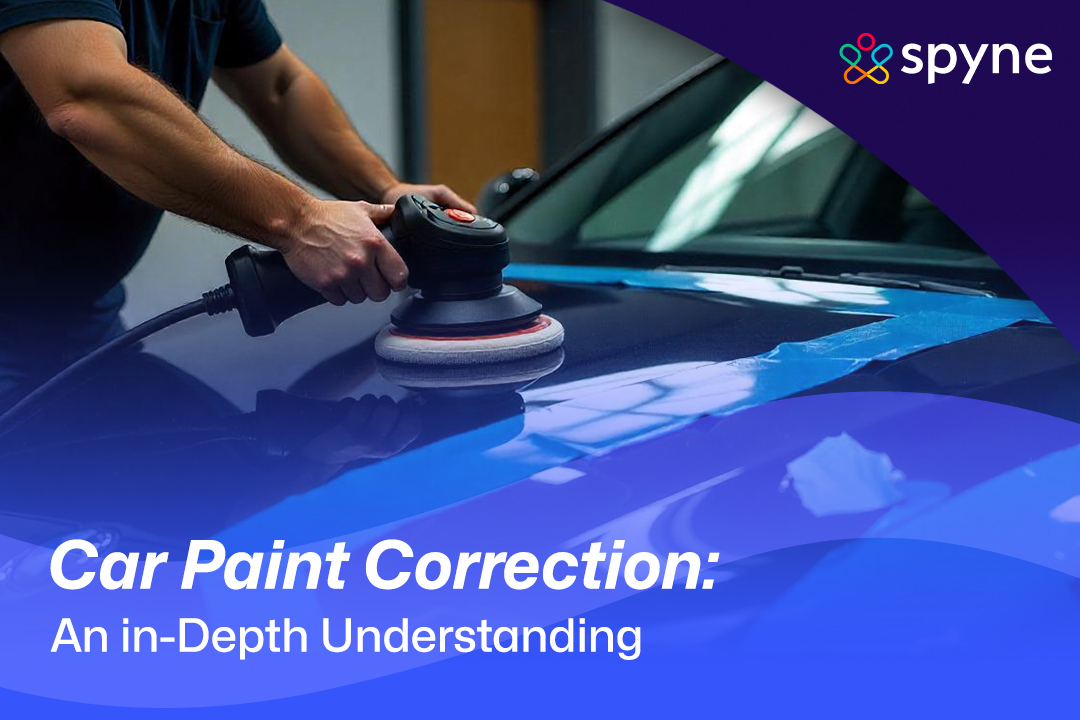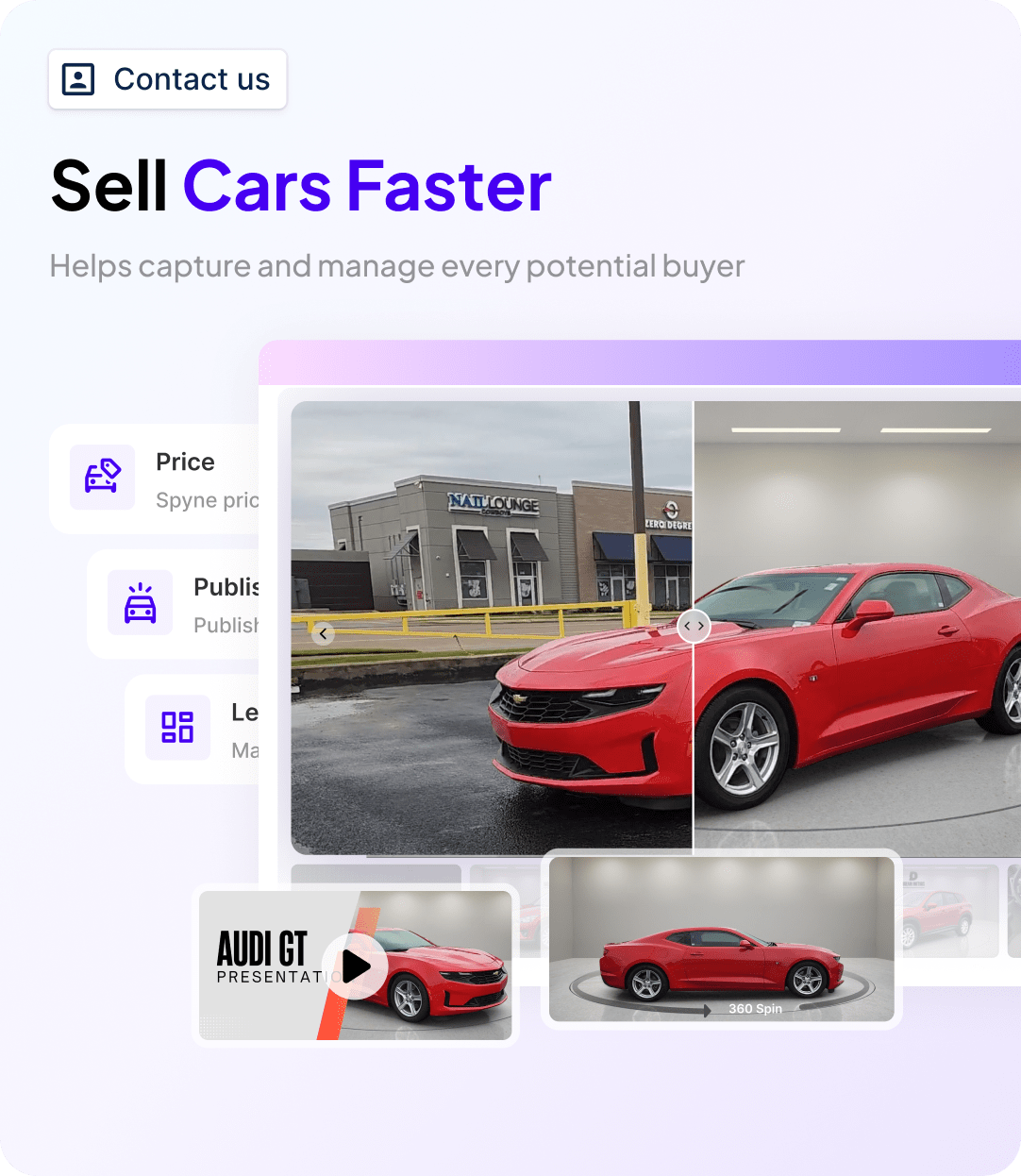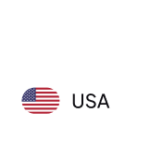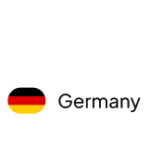What comes to mind when you hear the term “Car Paint Correction?” Maybe you think of someone quickly touching up a scratch with a bit of paint or using a buffer to shine things up. Not quite. While those things might help a little, they’re not what true auto paint correction or automotive paint correction is about.
Think back to when your car was brand new, how smooth and glossy the paint looked. You car used to shine under the sun while attracting second glances but after a few drives, it all started to fade away. You started to notice a few scratches, swirl marks, or cludy spots and chips in the paint. These imperfections are common within car owners, especially when you opt for regular washing and daily use.
But here’s the good news: paint correction for cars can bring that finish back to life. If your car’s paint is looking a little tired, don’t worry; it’s not permanent. With the right process, you can make it look new again.
What is Car Paint Correction?
Car paint correction is a careful and precise detailing process that removes imperfections from your car’s clear coat. That includes things like swirl marks, light scratches, oxidation, hazing, and other blemishes that mess with the way your paint reflects light. It’s not about covering things up but it’s about fixing them.
Unlike a quick wax or polish, paint correction actually removes a very thin layer of the clear coat (the transparent layer that protects your car’s paint). This procedure is done using tools and polishing compounds and the result, you ask? A smooth, glossy, and mirror-like finish that will make your car look better than when it was new.
Car detailing and car paint correction does not involve repainting your car but rather working with what is already there. It refers to as refining the existing surface till you can’t see the imperfections anymore. It’s a highly skilled, time-consuming process, but when done right, the results are stunning.
If you care about how your car looks and especially if you’re preparing to sell it or show it, paint correction for cars is one of the best ways to restore that head-turning shine.
What Does Vehicle Paint Correction Actually Do?
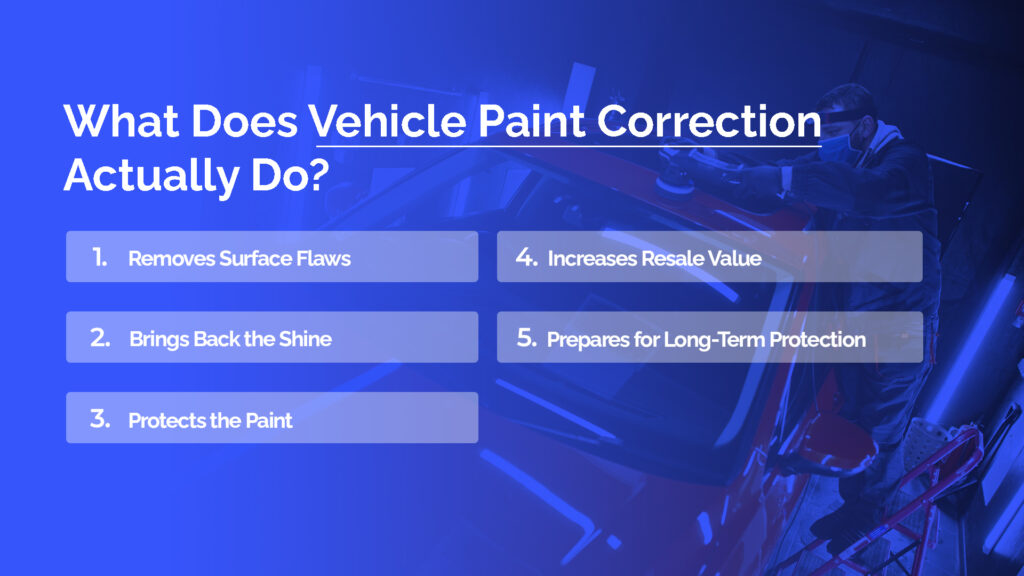
- Removes Surface Flaws: Swirl marks from improper washing, light scratches, water spots, oxidation; automotive paint correction carefully polishes these away, leaving the surface smooth and clean., leaving the surface smooth and clean.
- Brings Back the Shine: Over time, your paint can start to look cloudy or dull. By gently leveling the clear coat, paint correction removes haziness and reveals a glossy, high-clarity finish that looks like new.
- Protects the Paint: Once the surface is corrected, it’s easier to apply a layer of protection; like a sealant or ceramic coating. This shields the paint from harsh sunlight, acid rain, and road grime, helping it last longer.
- Increases Resale Value: A car with flawless paint just looks better, and it shows potential buyers that you’ve taken good care of it. That can make a big difference when it’s time to sell.
- Prepares for Long-Term Protection: Think of paint correction as laying the foundation. Before applying any kind of long-term protection like a ceramic coating, the paint needs to be as perfect as possible. This ensures the coating bonds properly and performs at its best.
Step-by-Step: How Paint Correction is Done
Car paint detailing and correction is a detailed and multi-step process that needs the right skills and tools. Let us walk through the whole process of car paint correction:
1. Prep & Clean the Surface
Before you touch the paint with a polisher, the car needs to be squeaky clean. That means a full wash with a pH-neutral shampoo to strip away dirt and grime. After that, a clay bar treatment or decontamination spray helps remove stubborn stuff like sap, tar, and iron particles that washing can’t get. This step is crucial—anything left on the surface can cause scratches during correction.
2. Inspect the Paint
Once the car’s clean and dry, it’s time for a close inspection. Under bright lighting, you’ll look for swirl marks, scratches, and dull areas. You can even run your fingernail over a scratch—if it doesn’t catch, there’s a good chance it can be corrected with polishing. If it does catch or you see bare metal, that’ll need more than correction, possibly touch-up paint or bodywork.
3. Level the Paint Surface
Now the real work begins. Using a dual-action or rotary polisher, you’ll apply a cutting compound with a foam or microfiber pad. This process gently removes a very thin layer of the clear coat to even out the surface and eliminate defects. You’ll work in small sections—usually about 2 feet by 2 feet—slowly and evenly. Pads should be swapped out regularly to keep the results consistent.
4. Polish & Refine the Finish
After cutting, you’ll polish to remove any light haze or micro-marring left behind. This is where the shine really starts to pop. You might use a medium polish for any remaining marks, followed by a finishing polish to really bring out that glossy, mirror-like finish. This step may involve two or more passes depending on the condition of the paint.
5. Seal & Protect the Finish
Once the paint is corrected and looking flawless, the final step is protecting it. You have a few options:
- Wax gives a rich, glossy look but only lasts a few months.
- Paint sealants last longer- anywhere from 6 to 12 months.
- Ceramic coatings offer the most durable protection (up to 3–5 years), along with added resistance to scratches, water spots, and UV damage.
This protective layer helps lock in the results and makes future cleaning much easier.
Tools and Compounds Used in Paint Correction
Paint correction for cars isn’t something you can just do with any old cloth and polish. To get great results, you need the right tools and products. Here’s a quick rundown of what’s essential:
- Machine Polisher: There are two main types—dual-action (DA) and rotary. DA polishers are easier to use and safer for beginners because they’re less likely to damage your paint. Rotary polishers pack more punch but require more skill to avoid burning through the clear coat.
- Polishing Pads: These attach to the polisher and come in different materials:
- Foam Pads: great for light polishing and finishing touches.
- Microfiber Pads: a bit more aggressive, perfect for cutting through tougher clear coats or ceramic coatings.
- Wool Pads: good for soft paints or sticky finishes because they generate less heat.
- Cutting Compounds and Polishes: Compounds are rougher and used to remove heavy defects like deep scratches. Polishes are finer and help smooth out light swirl marks or haziness.
- Paint Sealant: This synthetic product protects your corrected paint from UV rays, heat, and dirt. It locks in the shine and keeps your paint looking fresh longer.
- Clay Bar or Decontamination Spray: Used before polishing to remove stubborn dirt and contaminants embedded in the paint.
- Microfiber Towels: Soft and lint-free, these towels help wipe down surfaces without adding new scratches.
Using high-quality tools and compounds makes a huge difference—not just in the results but also in protecting your car’s paint during the process.
How Does Paint Correction Work?
At its core, paint correction is about removing a very thin layer of the clear coat to get rid of surface imperfections. Here’s how the process unfolds:
- Cleaning and Decontamination: The first step is making sure your car is spotless. Dirt or contaminants left on the surface can cause damage during polishing, so washing with a gentle shampoo followed by clay bar treatment or decontamination spray is critical.
- Assessing Damage: A close vehicle inspection under bright light helps identify what kind of imperfections you’re dealing with, whether they’re shallow swirl marks or deeper scratches, and what tools you’ll need to fix them. If scratches are too deep and reach the paint or metal underneath, they usually can’t be fixed with correction alone.
- Cutting and Leveling: Using a polisher with a cutting pad and compound, the detailer removes microscopic layers of the clear coat. This evens out scratches and swirl marks, smoothing the surface. Depending on the polisher, the motion might be orbital (for DA) or circular (for rotary), and the abrasiveness of the compound works to “level” the paint.
- Polishing for Gloss: After cutting, a finer polish and softer pad are used to eliminate any haze or micro-scratches left behind. This step brings back clarity and that beautiful mirror-like shine.
- Protecting the Finish: Finally, a protective layer such as wax, sealant, or ceramic coating is applied. Ceramic coatings stand out for their long-lasting protection, scratch resistance, and ability to repel water and dirt.
Because clear coat is thin, this process requires a delicate balance—removing enough to fix defects but not so much that you damage the paint beneath.
How Spyne Helps in Car Paint Correction
- AI-Powered Surface Analysis: Spyne’s imaging is so advanced that it uses the power of AI to spot every blemish and scratch so that detailers can come up with an exact plan for correction.
- High-Resolution Before & After Photos: Spyne’s tools can capture images of the whole process so that you can document work or show it to potential buyers.
- Virtual Showroom: Spyne’s 360-degree virtual tour can highlight your car’s flawless finish, making it all the more attractive to buyers interested in car branding or showcasing.
- Efficiency for Detailers: Spyne provides car damage assessment, vehicle inspection, and documentation so that professionals can save time and ensure high-quality results.
Conclusion
Car Paint Correction is not just about buffing out scratches but also a procedure to help you restore your car’s shine, protecting the paint, and adding value to your vehicle. With the right tools and techniques, anyone can bring their worn-out car back to life.
Thanks to innovations like Spyne and advancements in AI car design generator technology, the process of car paint detailing and paint correction is becoming more precise and accessible than ever before. So, if your car is looking a bit worn down, fret not. With paint correction for cars, you can wipe away years of wear and enjoy the glossy finish like that of a new car.

